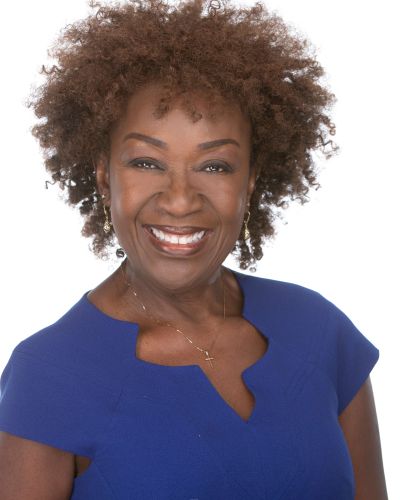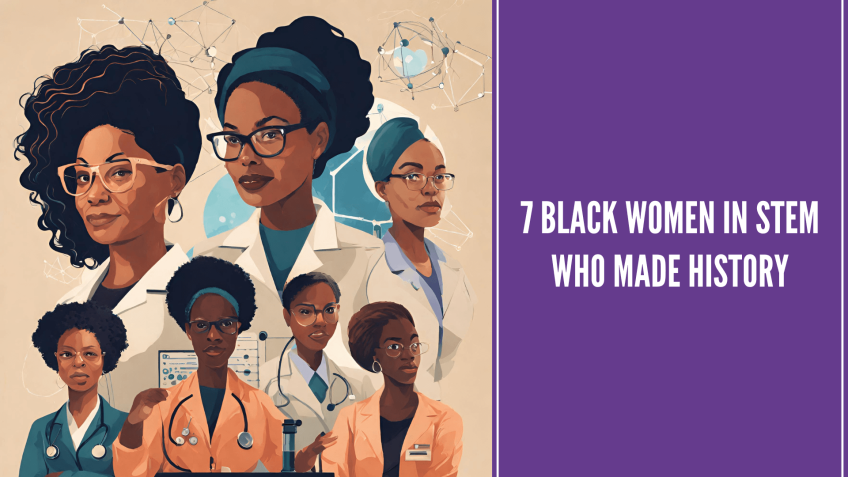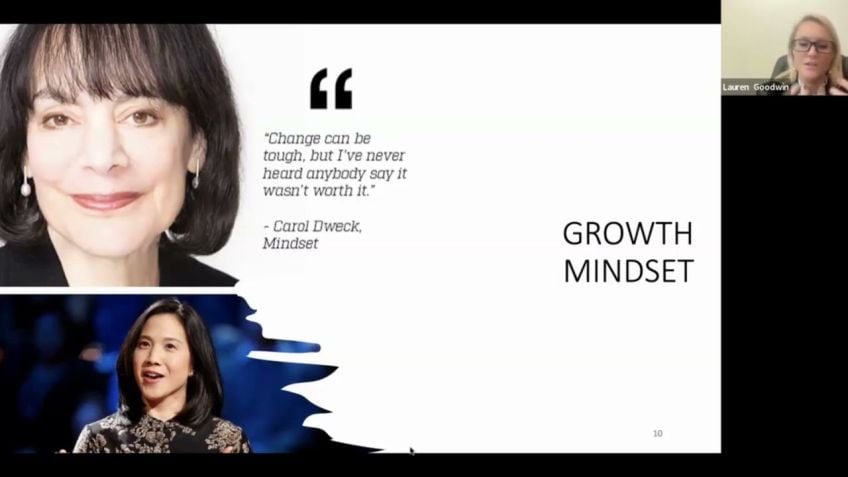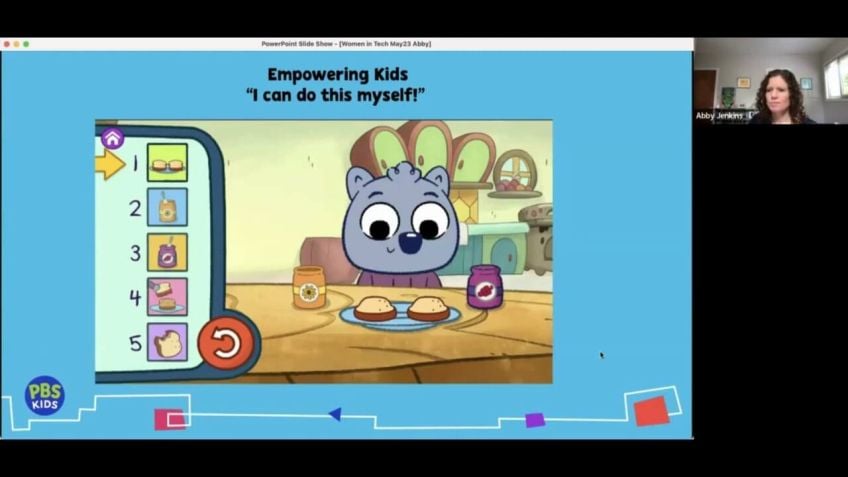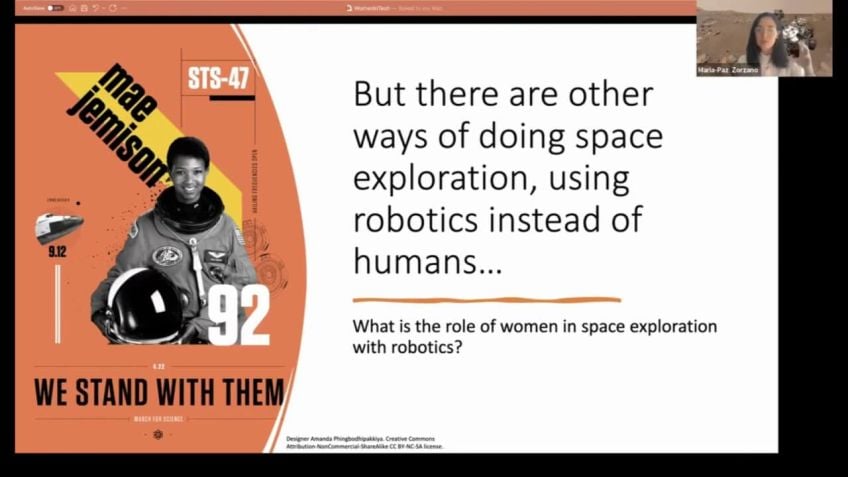I Can't Quit - Experiences of Black Women in STEM Professions
Dr. Margery Sendze
Sr. Technology Manager - Talent EnablementUnderstanding and Bridging the Diversity Gap in STEM
If you study the demographic make-up of careers in science, technology, engineering, and math (STEM), you will soon realize a striking disparity. Women and particularly black women are drastically underrepresented in these fields. Stemming from a personal experience and a desire to create more inclusive spaces in the STEM workforce, Technology Manager, Marjorie Fenzi pursued a journey to understand and highlight the experiences of black women who have sustained a career in STEM professions. This article offers insights and recommendations based on Fenzi’s research, aimed at filling the gender and racial gaps in STEM.
The Challenges and Opportunities
Underrepresentation of Women in STEM
In a conversation, someone genuinely and favorably surprised, identified Ms. Fenzi as an ‘outlier’, a black female technology manager which was a rarity. This realization of being an exception rather than the norm in the technology environment sparked an interest and motivation to dive deeper into the experiences of women, particularly black women, in STEM. The findings were disturbing. Black women occupy a paltry 2% of the STEM profession, despite making up 14.1% of the female workforce and earning 8.2% of STEM degrees conferred to women.
The Importance of Diversity in Innovation
The implications of the underrepresentation of women, and specifically black women, extend far beyond the walls of fairness or equality. A report by the U.S. Bureau of Labor Statistics (2021) shows that STEM is the fastest-growing job sector, with employment projections showing an expected growth of 8% by 2029. However, the scarcity of talent in the field presents a persistent gap, limiting innovation and progress. Research has shown that diversity sparks creativity—an essential element in innovation. Diverse teams are associated with improved performances, innovative products, and increased shareholder profit. Thus, engaging underrepresented populations becomes a strategy for bridging the innovation gap.
The Research Journey
Positioning herself strategically as an organizational psychologist, Fenzi embarked on an enlightening academic journey to further investigate the experiences of black women in STEM. The research sought to explore the experiences of black women who stay in STEM and understand what could be learnt from them—to enhance recruitment and retention strategies. Using the embeddedness theory framework, which focuses on understanding the material and psychological attachments or links people form on the job and how these influence the decision to stay, the experiences of 13 black women in STEM professions were closely studied. Seven core themes emerged from the experiences of these women.
Key Findings
- Navigating Blackness and Womanhood: Black women face several challenges, such as isolation, proving oneself, racial battle fatigue, being seen as a token, invisibility and more. However, they leveraged their unique perspectives, positioning them as a fit for their jobs.
- Support and Anchors: Relationships with family members, churches, sisterhood circles and work colleagues formed a critical part of their support system.
- Welcoming Workspaces: Environments that are flexible and diverse were noted to make the women feel comfortable in their work.
- Innovation Opportunities: The women thrived on opportunities to innovate and engage in challenging assignments.
- Service Call: The women felt a sense of responsibility and purpose to make a difference, particularly in their communities.
- Agency: The women displayed a high level of self-efficacy, confidence and control in the success of their job roles.
- Financial Security: The good salaries in STEM professions offer these women financial stability.
Steps Forward
The findings provide significant insights for organizations aiming to tap into a diverse talent pool in STEM. A few recommendations include providing opportunities for continuous learning, creating diverse and inclusive workspaces, promoting equal pay, fostering meaningful relationships within the workplace and nurturing leadership roles that propagate diversity and inclusion.
Conclusion
The journey to closing the gender and race gap in STEM is complex, but not unachievable. Paying close attention to the experiences and insights of those currently underrepresented in the field is the starting point in irreversibly transforming our workplaces into inclusive spaces. As Marjorie Fenzi's study illustrates, black women hold a tremendous potential to drive STEM landscapes forward, despite the unique set of challenges they face. It is time to ensure their experiences and voices are heard, respected, and integrated into our strategies for change.
Video Transcription
From Kansas City. I'm Marjorie Fenzi, a technology leader, organizational psychologist, and an avid advocate for creating inclusive spaces in the STEM workforce. So all can thrive.But before I could, um I continue, I'd like to tell you a little story about how I found myself here today, presenting my research on the experiences of black women who stay in STEM profession. Now, one day in 2013, I walked into an elevator at work and ran into this gentleman with the most welcoming present. He immediately engaged in a conversation and he asked me about my role in the organization. I told him I was a technology manager and which to me was not a big deal, but it was his reaction and what he said, that gave me pause, he smiled and with curiosity. And then he said, hm, a black female technology manager. Now that's different. Don't get me wrong. I knew he meant no harm because of what I perceived as the welcoming present and my belief that he was indeed happily surprised to see a black female technology manager in the organization. But while I understood um that he was coming from a place of positive intent. I suddenly became uneasy and I was reminded of the fact that I, I am an outlier now to compound my heightened sense of uneasiness. I lost my father a few months after that encounter.
You see, my father was my anchor, my champion in chief and my ally. I still remember very vividly coming to work one day while I was still breathing and I just had this feeling like the world was just go, was gonna just gobble me up. Everything seemed very difficult and bleak. Then I looked around and again, I was acutely aware of the fact that there were not many women in technology and almost no one that looked like me. I knew about the absence of women in technology, especially black women. But the heightened awareness around the absence of women in the profession became this powerful moment for me that would change my career focus and my purpose for good. And then a few months later, I attended a conference of women in technology. Now that was a moment of epiphany listening to all these women in tech ex um expressing their experiences, challenges and obstacles in the profession. Finally made me realize that I was not alone. So I decided to be part of the solution. And I made a commitment to myself that I will leave. I will ensure that I work to leave the profession better than I found it. So I began focusing my career and personal um outreach initiative to understand actions and practices that can be implemented to grow the STEM pipeline and also to create a workforce environment where everyone, everyone, all STEM professionals can work together, value each other's contributions and try.
And so that's how I found myself here today, applying meaningful insights into helping to close the gender and race gap in stem, amplifying the voices and experiences of those marginalized and stem pathways. So white black women in stem, well, besides the fact that I am one, when I started looking at the underrepresentation of women, um and researching just general history of women in the workforce, I came to realize that that men maintain the highest rate of workforce, female workforce participation in the US.
Since 1996 they make up 13.6% of the US female population, 14.1% of the female workforce, 8.2% of the STEM degrees conferred to women, but only 2% in the STEM profession. And here's why that information is important. According to a 2021 report from the US Bureau of Labor Statistics te is still the fastest growing job sector in the United States. Employment uh projections show that by 2029 stem occupations are expected to grow by 8% compared to 3.7% for all other occupations also stem occupations um may grow up to uh it's projected that STEM occupations may grow up to 2.7% more than before the COVID-19 pandemic. But this high demand of stem talent um exceeds the capacity of the stem industry to be able to fill the pipeline and create the persistent gap in the industry. But as researchers have noted innovation needs the level and type of creativity often produced by diverse teams, diverse teams create diverse teams create um excuse me, diverse teams create um realize higher um level of performance to create innovate uh better innovative products and the increased shareholder profit.
Yet the stem industry has been challenged in leveraging underrepresented populations and communities of different in the US stem workforce to help bridge the gap. So it's on the heels of the data that I saw an opportunity to better understand the experiences of black women in STEM.
But the research sounded very bleak when I was getting into it. And I started wondering why, let me just give you an example of how the experience with being um was being described and um supported by empirical data. What we know they were described as a double bind, double jeopardy, cumulative disadvantage, emotionally taxing visibly and um invisible, unhidden and tokenism just to name a few. Now, this all sounded very hopeless and powerless. And as a black woman in the stem profession, who has lived these experiences, I needed to find a way to shift my energy toward a more positive and empowering state. So I decided that I needed to find out why the 2% that stay in stem, stay in stem. What can we learn from them and how can we recruit and retain more? And so I went back to school to do um a doctorate in organizational psychology to help me understand the experiences of people and especially um technology talent in the workforce and people of color and women in the workforce. And really focus my research um around to a manage them. So what do we know about the 2% that stay in? Stem? Well, not much. Up until this research, there was limited insight into why they stay.
Research also underscored the point that their experiences are quite different from that of their non-hispanic white counterparts because their experiences intersect at the access of two visible identities, gender and race. As Kimberly Crenshaw describes it, the concept of intersectionality defines how an individual social, um how an individual social world is constructed within the context of multiple identities which informs their unique experiences. However, to understand their experiences, I needed a frame to focus on the intended outcome, which was to really understand why they stay. So for me, I decided to choose the embeddedness theory because the embeddedness theory provides a framework that helps you understand um how individuals make meaning of the combination of material and psychological attachment, both on the job and of the job that influences their decision to stay on the job.
It also emphasizes the point that employees do not leave behind the of the job experiences. When they come to work every day, they bring those experiences with them to work into the workplace. And so, based on this premise, it's very important to understand how many employees on the job and of the job attachment influences their decision to stay on the job. Now, these attachments can come in the form of links to other people and activities, also their perceptions of how they believe their job fits with other aspects of their lives. And quite frankly, the sacrifices that they would have to make if they leave the job. So what was the core question? I was trying to understand, I was basically trying to understand, you know, through an objective length, why black women stay in stem professions long term. So based on this, I was able to explore the uh embedded experiences of 13 black women in stem professions. May I introduce to you Aliyah Bella Ebony Destiny, Sophia Chloe Dee, Semi Maria, Southern girl Jen Jasmine. These are the women behind the voices of this research. This um the research um and through, through their voices, seven core themes revealed their on the job and of the job experiences and sacrifices that make them stay in the profession long term. So let's examine these themes.
The first theme that emerged was navigating their blackness and womanhood and in navigating their blackness and womanhood. These three men shared that their identity presents disadvantages such as isolation. Um proving oneself racial battle fatigue, seeing being seen as a token being the only one and invisible for these women, they are visible identities as black females, excuse me, as black and female. They um for these women, they are visible in, excuse me, for these women, they are visible identities as black and female was very salient, especially in their race. Their race was more salient than their um gender. This intersectional experience is actually summarized by Jen who stated that I have not really thought about my gender because my color has been so significant. I am trying to get over the hurdle of being black before becoming before uh being a woman. However, though despite the tension in navigating the race agenda, they have um often activated and often know how to activate a web of under job and of the job links fit and sacrifices to keep them from quitting their job. For instance, they see the ability to bring their unique, unique perspectives to the job as a fit because they are often the only black woman in their department. As Sophia explained, I bring in a different perspective because I am the only woman of color in that room.
But there's another side of being the only black woman. Um And as um Jasmine explained my perses my perception is that I have to represent everyone that looks like me. Every black woman, every black man, every black kid or just people of color in general. I am the representative of that race. However, these women are able to sometimes navigate their experiences in them to their unique advantage by seeking opportunities to stand out for good and leveraging their visibility as the only one to positively assert themselves and affirm their role as contributing to them. Uh professional.
As Maria said, sometimes I like being the only woman there because it's like, wow, I must be smart if I'm sitting here with you all and you all are listening to me and listening to what I have to say. But again, I don't want to fight. I just want to come to work every day and be appreciated for the value. I uh um I add another theme that emerged was um as a key factor in making them stay but their links and their anchors. Now at the center of these women's um support system is their family. They are churches, sister circles and work relationships. As Chloe said, I have always had family support from day one. So I feel very, very support and supported in that respect. And as Destiny said, my sisterhood makes me feel like I am never alone. These women said that they have been to create networks and meaningful relationships at work. Also make them a good fit for their job. Their links such as relationships with leaders and peers at work and investments made by their companies. Also make them um linked to their jobs. Now, in terms of relationships with um leaders, Ebony seize that. Although I feel invisible most of the time, there's always one person at work that sees me, it just takes one person to see me and when they see me, they can take me to the next level. So when that person shows up, I am good.
And Aaliyah said that having a super uh and also supervisor has definitely kept her in the field. Now, another thing that emerged was um the fact that these women value welcoming workspaces as they discussed environment that is welcoming, flexible and shares diverse perspective, make them embrace and make them feel embraced and comfortable and allows them to stay in the job long term.
And working in an environment that encourages innovation, supportive teams, growth and opportunities and promote diverse perspectives was also noted as a fit for these women. As Sophia summarized what really helped me stay is the flexibility in my schedule. I don't have somebody micromanage to me.
They treat me as an adult and as a professional as the next um um theme that also emerged from this finding was the fact that these women thrive on opportunities to innovate and grow and engage in challenging assignments. This actually influences their decision to stay in the job.
And as jasmine explained, innovation comes with them. So I am just not sure if another area will captivate me the way stem does. And as des um excuse me, as Destiny summarized, I would like to have more opportunities to be able to grow, not just my technical skills, but my leadership and development opportunities. If there were more opportunities for us to be promoted, there will be no stopping us. No.
Another theme was the fact that these three men do actualize a call to serve. They feel a sense of responsibility in making a difference in their communities by investing in others. They use their skills, their expertise and um as their professionals in giving back to their communities, which links them to their job. As Southern Girl explained, it's just not in my heart to leave the profession. I feel like I would be letting down a whole bunch of people if I did leave and I don't even know who these people are. I just know I would be letting a whole bunch of people down if I leave and semi summarize that sometimes it's just not for personal reasons, but for the impact that as a black woman you could have on your community, people are looking up to you. So you don't want to leave, you want to stay. Now, in terms of um the teams around their agency, these women um really demonstrated a very high level of agency and they uh they confidently explained how their skills, knowledge, agility, and decision making and control and success made them a good fit for their job.
As um Jane noted, I have a um a lot of knowledge in this area. Um I, I do my research I learn and I spend a lot of time making sure that I understand the task in front of me and I execute it accordingly. As Maria Note, you have to have a little bit of self-preservation if you um if you want to stay in the job. And as a black woman, um um based on what Ebony said, you have to build that muscle to be able to take whatever is coming at you, you have to persist as much as you can. Now, above everything, these women also felt like financial security that comes with good salaries since then is also a key reason why they stay in the job. However, these financial links also present some sacrifices if they leave the job. As Sophia said, I do enjoy the level of lifestyle that I'm able to have by staying in the stem career. I know what poverty looks like growing up. I was told education is my only way out. So that has played a huge factor in selecting or helping me select my profession and staying in the profession long term.
Now, at the end of the day, what is the experiences of the uh of black women who stay in the same professions and why do they stay well. The experiences can be surmised as an intricate tapestry uh on the job and of the job forces experience at the intersection of race and gender that relies on support, anchors, welcoming workspaces the opportunity to innovate and grow a heightened sense of purpose driven by a distinct level of urgency and confidence and the desire for financial security.
So what did we learn from these women and what can we do um do about it? Well, the findings of the study suggest that stem organizations should be more intentional about providing opportunities for continuing for continuous learning and growth to harness the platform performance, desire to want to innovate solutions in the stem. Also the need for organizations to create inclusive work spaces and actively promote and embrace the value of this diverse perspective was echoed in the study and supported by previous findings. Also, hr practitioners should engage black women who are already active as stem catalysts in their communities to help to advocate and recruit um other um underrepresented people in stem from a pay equity perspective. Um The study suggests that P should actually be looked into and um to understand and be consistent in analyzing how pay and promotion can be equitable. Also, leaders are encouraged to have a critical role in in encouraging meaningful relationships with these women. So again, why do black women stay in stem professions long term? Why can't they, why do they, why do they not want to quit? Well, it's complicated. Thank you. Thank you. Thank you. I know I have one minute for questions.
But, oh, hopefully I've been able to give you a high level of my research,
Marge. I'm not seeing any questions yet in the, in the chat or the Q
and A it ended. I think I saw one question. Um,
oh, there's a question popped up. How do companies take advantage of your research?
Well, as I, um, said earlier, there are some recommendations that came out of the research and, um, if you look at my screen there, there's some that you know, are practical steps really low hanging fruit and there are um some that will encourage psychological safety week at the end of the day.
It's one of the key factors in enabling them to stay. And so companies can look at the recommendation out of the research and try to see what can be applied. It will be different for every company based on where they are.
Oh, she um did clarify, Tina did clarify, I mean, how are companies made aware of your research? So how are you sharing this research out to
companies? Ok. So first of all, the research is published in a peer review journal and I have tried as much as I can to amplify to linkedin and other um channels where I know I can reach um individuals. So if you're interested in my research, go to my profile on linkedin and you'll be able to also see the research um a link to the to the um research article
in Marge. There's one final question, what sort of training would be beneficial for promoting a welcoming
workspace? Wow. Yeah. So I'm, I'm a, I'm a huge believer that we all move at the pace of our self interest. There's no blanket solution. You need to be able to understand and um look for those leaders who are willing to move in that journey and those leaders who are willing to move in the journey are the most critical actors in this. In creating those um those environments, they need to be able to understand and be at a place where they want to be able to take the organization to um through that um journey of inclusion. Everyone in the organization is also responsible for creating that environment where people feel included. But then again, the the I mean, people leaders need to lead by example because we are, we all look up to our leaders so that it and so if I leave this, that inclusive and to um take the time to get to see people know people and learn about them and everyone or at least everyone who is willing to go through that journey will do the same.
It's all about the leaders, it starts with them.
Thank you, Marge. That's all of the questions and all of the time that we have for today.
Thank you. Thank you. Thank you.

